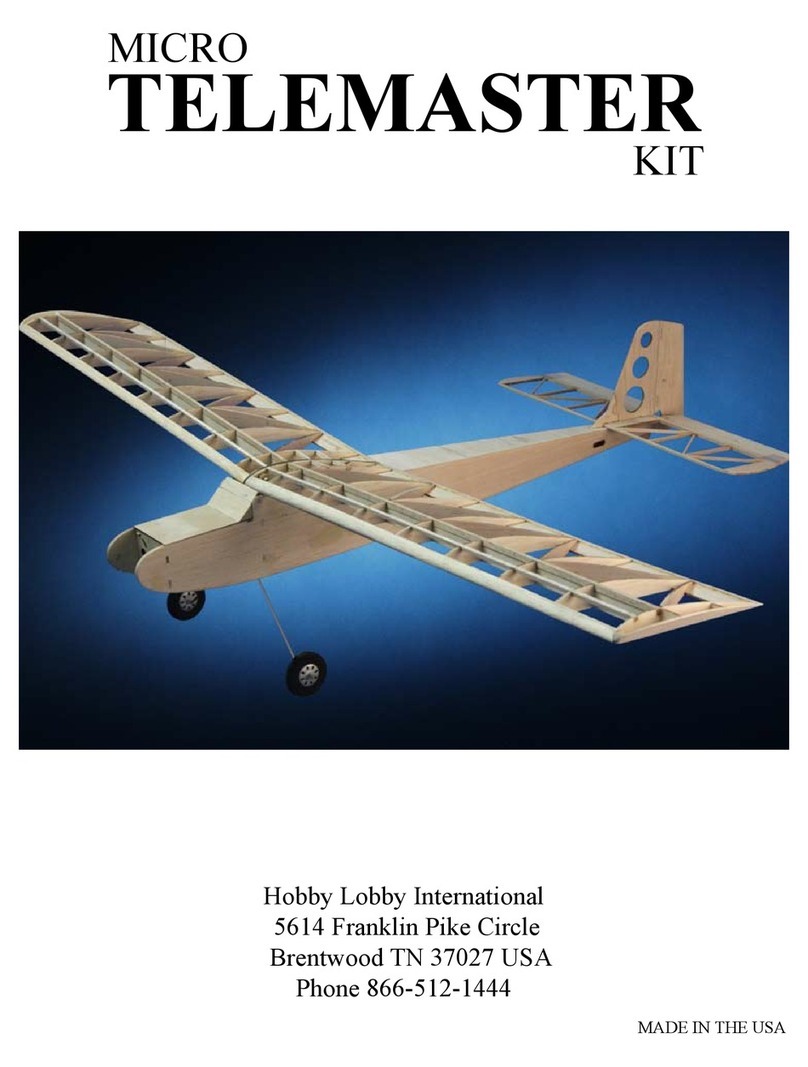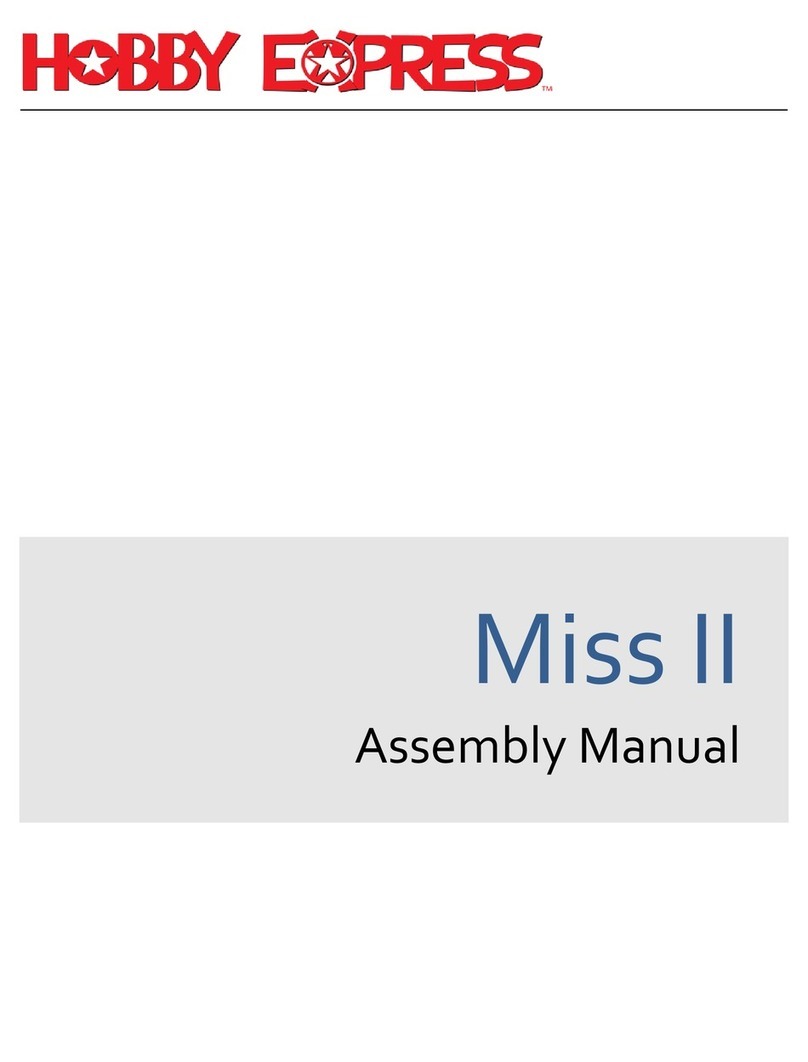Before starting, use the
Contents list to take an
inventory and make sure it is
complete. If any parts are
missing or are not of
acceptable quality, contact
Hobby Express Support at
1-615-373-1444 .
This manual assumes the
builder possess intermediate
assembly skills. Seek help
from another pilot or an
experienced modeler if you
are unsure how to complete any steps in this manual.
Contents List
!Fuselage
!2 Wing Panels
!2 Horizontal Stabilizers
!Vertical Stabilizer and Rudder
!Aluminum Wing Joiner Tubes
!Aluminum Stab Joiner Tubes
!2 Aluminum Wing Struts
!Wire Landing Gear
!Main Wheels and Steerable Tail Wheel
!Wooden Motor Mount
!Pushrods, Control Horns, Pin Hinges and assorted fasteners
Additional Items Required
!6-channel Aircraft Radio w/ Receiver (minimum)
!5000mah, 5-cell, 18.5v Lipo battery
!(6) Standard sized servos
!(4) 24” Servo extensions
!(2) 12” Servo extensions
!(3) 6” Servo extensions
!(1) Servo Y-harness
!70-80 amp Brushless ESC
!AXI 4120/18 Brushless Motor and radial mount set
!APC 14x10 “E” Propeller
!Glues, solder, connectors
2





























